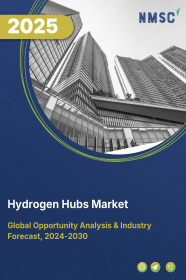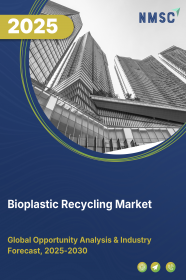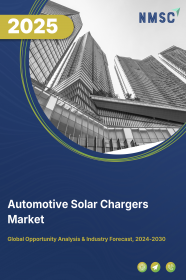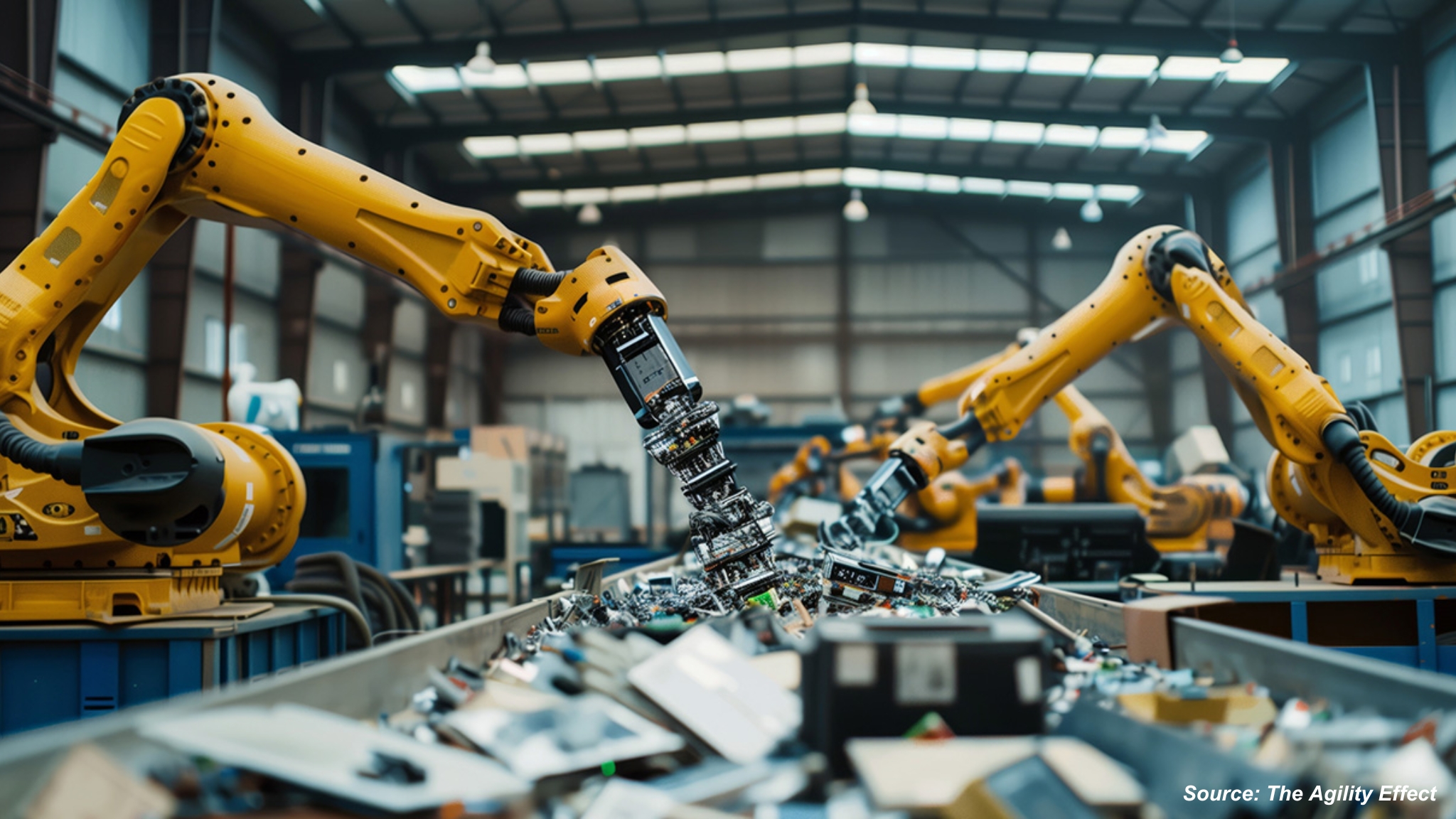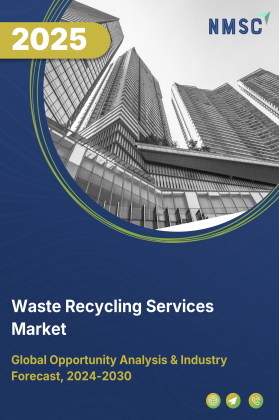
Waste Recycling Services Market by Waste Type (Paper & Paperboard, Metals, Plastics, Glass, Food & Organic Waste, Batteries & Electronics, Construction, Textiles & Apparel, Tires & Rubber, Other Materials), by Service Type (Collection & Transportation, Disposal & landfilling, Waste Audit & Consulting, Processing & Treatment, Material Recovery & Sorting, and Recycling Support & Certification), and Others — Global Opportunity Analysis and Forecast 2025–2030
Industry Overview
The global Waste Recycling Services Market size was valued at USD 87.72 billion in 2024 and is expected to reach USD 93.46 billion by the end of 2025. The industry is predicted to reach USD 126.73 billion by 2030 with a CAGR of 6.3% from 2025-2030.
The market is expanding due to rising sustainability initiatives across the construction, industrial, and urban sectors. Stricter environmental regulations such as the EU’s CSRD, India’s Swachh Bharat Mission 2.0, and US climate laws are pushing industries toward circular practices, increasing demand for services handling complex waste like metals and composites.
Technological advances in battery and electronics recycling, driven by companies like Li-Cycle and Redwood Materials, are boosting recovery rates and regulatory compliance. Urbanization is further driving municipal waste recycling, especially in rapidly growing economies like India.
However, high costs and complexity in chemical waste recycling remain a restraint. Still, the global shift toward circular economy practices is unlocking opportunities for specialized recycling services and sustainable resource recovery.
Sustainable Practices in Construction and Industrial Sectors Boost Recycling Demand
The construction and industrial sectors generate vast amounts of recyclable waste, including metals, plastics, and glass. Governments and international bodies are enforcing policies that push these sectors toward greener practices. For instance, in India, the Central Assistance under Swachh Bharat Mission 2.0 accelerates source segregation, waste processing, and waste reduction.
Also, in January 2025, the U.S. government launched environmental laws like SEC rules, California's SB253, New York's A4123, and the EU's CSRD, focusing on compliance, transparency, and sustainability. As a result, there is a rising demand for recycling services that handle complex industrial and construction waste streams, such as composite building materials, scrap metals, and polymers. This shift supports the adoption of specialized recycling infrastructure and fosters circular economy practices in traditionally waste-intensive industries.
Technological Advancements in Battery and Electronics Recycling Accelerate Market Growth
Technological innovation is playing a pivotal role in transforming the waste recycling services market demand. The increasing usage of consumer electronics, EV batteries, and renewable energy systems has led to a surge in e-waste and spent batteries. For instance, Li-Cycle recovers critical materials from lithium-ion batteries, their technology enables up to a 95% recovery rate to return the critical materials to the supply chain. to reintroduce them into the supply chain.
Redwood Materials’ integrated process involves recycling batteries at the end of life, refining their critical minerals, and remanufacturing battery materials, including cathode active material, to go back into new battery production.
Furthermore, regulations like the EU’s Battery Regulation and the U.S. Environmental Protection Agency’s e-waste policies are mandating end-of-life product recycling. This regulatory and technological convergence is propelling the demand for services that specialize in electronics and battery waste recycling, transforming it into a high-growth segment of the market.
Rising Municipal Waste Volumes and Urbanization Drive Market Expansion
Urbanization and population growth have significantly increased municipal waste generation, encompassing paper, plastics, food, glass, and textiles. According to the UN Environment Program, municipal solid waste generation is predicted to grow to 3.8 billion tonnes by 2050. In response, countries are ramping up recycling infrastructure. With rapid urbanization, India’s waste generation is projected to reach 150 million tonnes by 2030.
Currently, 70% of waste is processed, and 87% of urban wards practice source segregation. The nation boasts 2,285 functional waste-to-compost plants with a capacity of 71,682 TPD and 123 waste-to-energy plants with a capacity of 4,746 TPD.These developments are intensifying the demand for municipal recycling services that manage diverse and growing waste streams efficiently.
High Costs and Complexity of Chemical Waste Recycling Restrict Market Growth
One of the primary restraints in the waste recycling services market growth is the high cost and complexity associated with recycling chemical and metallurgical waste. These waste types require specialized handling, stringent regulatory compliance, and advanced treatment technologies, which are expensive to install and operate. Smaller firms and local municipalities, especially in emerging economies, lack the technical capacity and financial resources to manage such operations.
Additionally, safety risks and the need for highly skilled labour further compound operational challenges. These barriers limit the growth potential of service providers targeting niche but hazardous waste categories.
Growing Embrace of Circular Economy and Recycling Practices Unlocks Market Potential
The global momentum toward sustainable development and circular economy principles is creating substantial growth prospects for the market. With a strong emphasis on reducing waste, promoting reuse, and enhancing recycling efforts, both governments and industries are actively working to conserve resources and decrease reliance on landfills. As a result, the demand for advanced equipment designed for material recovery, recycling, and composting is rising, paving the way for new revenue opportunities and fostering innovation across the sector.
Market Segmentation and Scope of the Study
The waste recycling services market report is segmented based on waste type, service type, recycling process, end user, and region. Based on waste type, the market is divided into paper & paperboard, metals plastics, glass, food & organic waste, batteries & electronics, construction, textiles & apparel, tires & rubber, and other materials. By service type, the market includes collection & transportation, disposal & landfilling, waste audit & consulting, processing & treatment, material recovery & sorting, and recycling support & certification. Based on the recycling process, the market is segmented into mechanical recycling, chemical recycling, biological recycling thermal recycling and electrochemical recycling. By end user, the market is categorized into residential, commercial, industrial healthcare, and agricultural & forestry sectors. Regional analysis includes North America, Europe, Asia-Pacific, and Rest of the World (RoW).
Geographical Analysis
North America continues to represent a significant segment of the global waste recycling services market share, bolstered by robust regulatory frameworks and increasing government investment. The region's commitment to sustainable waste management is evident in recent policy developments and funding initiatives.
According to a 2024 report by the U.S. Environmental Protection Agency (EPA), a substantial USD 117 million was allocated to advance recycling infrastructure and reduce food waste. Such investments not only strengthen the operational capabilities of recycling services but also signal long-term governmental support for environmental sustainability and circular resource use.
Europe maintains its leadership position in the global market, underpinned by its ambitious Circular Economy goals and stringent environmental directives. The European Union has continuously reinforced its policy stance through progressive legislation, such as the Waste Electrical and Electronic Equipment (WEEE) Directive.
In July 2025, the European Commission published an evaluation of this directive, highlighting its continued relevance and effectiveness after more than two decades of implementation. The directive sets minimum standards for the collection and proper treatment of e-waste, aiming to mitigate environmental harm and health risks. These frameworks continue to drive innovation and operational excellence in Europe's recycling sector.
The Asia-Pacific region is witnessing a rapid acceleration in the market, primarily driven by the growing challenge of urban waste management. As urban populations swell and consumption rises, the demand for organized recycling solutions becomes increasingly urgent. According to the latest 2025 report from India’s Central Pollution Control Board (CPCB), the country generates approximately 160,038 tonnes of solid waste each day.
The per capita waste generation rate, currently at 0.34 kg per person per day, is expected to more than double to 0.7 kg by 2025. This escalating waste burden is catalyzing the development of recycling infrastructure across the region, creating opportunities for service providers and encouraging both public and private investment.
In the rest of the world, including Latin America, the Middle East, and Africa, the formalization of recycling infrastructure is emerging as a strategic priority within the market. Although these regions face unique socio-economic and logistical challenges, there is growing recognition of the economic and environmental value of structured recycling systems.
Efforts to modernize waste management practices are being increasingly supported by national policies and international partnerships. This shift toward formalized recycling models is expected to enhance service delivery, improve public health outcomes, and open new avenues for sustainable economic development across these emerging markets.
Competitive Landscape
The market players in the waste recycling services industry are adopting various strategies to maintain their dominance in the market. Some of them are mentioned below:
-
In 2025, Waste Management, Inc. (WM) upgraded its Material Recovery Facility (MRF) in Wisconsin as part of a $39 million investment aimed at improving the capture of a wider range of plastic packaging. The upgrades included the installation of a film mitigation system and enhanced sorting capabilities for No. 4 plastics (LDPE). This investment directly contributed to increasing the efficiency and material recovery rates within the recycling stream, supporting WM’s efforts to meet rising demand in the market for more inclusive and advanced plastic recycling solutions.
-
GFL Environmental Inc. marked the opening of a cutting-edge recycling facility in Edmonton with a ribbon-cutting ceremony on March 2025. The company celebrated the launch of its state-of-the-art Material Recovery Facility (MRF) in Edmonton, Alberta, which significantly enhanced its capacity to process and sort recyclable materials. This development reinforced GFL’s commitment to advancing recycling infrastructure and contributed to the overall growth and modernization of the market.
-
In April 2025, Clean Harbors, Inc., a leading provider of environmental and industrial services across North America, introduced its “Total PFAS Solution” to comprehensively address customer needs related to PFAS (per- and poly-fluorinated alkyl substances), referred to as forever chemicals. This initiative expanded the company’s capabilities in hazardous material handling and aligned with increasing demand for specialized recycling and waste treatment services. By targeting the safe disposal and potential recovery of PFAS-contaminated materials, Clean Harbors strengthened its role in the evolving market, particularly in the hazardous waste segment.
-
In 2024, Waste Connections, Inc. continued advancing sustainable waste management practices by exploring alternative technologies aimed at reducing landfill disposal and lowering greenhouse gas emissions. These innovations directly contributed to the evolution of the recycling services market by promoting environmentally responsible waste diversion strategies.
Key Benefits
-
The report provides quantitative analysis and estimations of the market from 2025 to 2030, which assists in identifying the prevailing industry opportunities.
-
The study comprises a deep dive analysis of the current and future waste recycling services market trends to depict prevalent investment pockets in the sector.
-
Information related to key drivers, restraints, and opportunities and their impact on the market is provided in the report.
-
Competitive analysis of the players, along with their market share, is provided in the report.
-
SWOT analysis and Porter's Five Forces model are elaborated in the study.
-
Value chain analysis in the market study provides a clear picture of the roles of stakeholders.
Waste Recycling Services Market Key Segments
By Waste Type
-
Paper & Paperboard
-
Metals
-
Ferrous Metals
-
Non-Ferrous Metals
-
-
Plastics
-
Glass
-
Food & Organic Waste
-
Batteries & Electronics
-
Construction
-
Textiles & Apparel
-
Tires & Rubber
-
Other Materials
By Service Type
-
Collection & Transportation
-
Curbside Collection
-
Drop-Off Collection
-
On-Site Pick-Up
-
Deposit / Refund Programs
-
-
Disposal & Landfilling
-
Waste Audit & Consulting
-
Processing & Treatment
-
Material Recovery & Sorting
-
Recycling Support & Certification
By Recycling Process
-
Mechanical Recycling
-
Chemical
-
Biological Recycling
-
Composting
-
Anaerobic Digestion
-
-
Thermal Recycling
-
Pyrolysis
-
Gasification
-
Incineration with Energy Recovery
-
- Electrochemical
By End-User
-
Residential
-
Commercial
-
Healthcare
-
Institutional
-
Schools
-
Government/Municipal & Military Buildings
-
-
Industrial
-
Packaging
-
Automotive & Transportation
-
Construction
-
Consumer Electronics
-
Manufacturing
-
Textiles & Apparel
-
-
Agricultural & Forestry
By Region
-
North America
-
The U.S.
-
Canada
-
Mexico
-
-
Europe
-
The U.K.
-
Germany
-
France
-
Italy
-
Spain
-
Denmark
-
Netherlands
-
Finland
-
Sweden
-
Norway
-
Russia
-
Rest of Europe
-
-
Asia-Pacific
-
China
-
Japan
-
India
-
South Korea
-
Australia
-
Indonesia
-
Singapore
-
Taiwan
-
Thailand
-
Rest of Asia-Pacific
-
-
RoW
-
Latin America
-
Middle East
-
Africa
-
Key Players
-
Waste Management, Inc.
-
Republic Services, Inc.
-
Waste Connections, Inc.
-
GFL Environmental Inc.
-
Sims Limited
-
Radius Recycling (formerly Schnitzer Steel Industries)
-
Fornax Technology Pvt Ltd
-
Nexus Circular
-
Recycleye
-
HyProMag
-
PureCycle Technologies
-
Plastic Energy
-
Agilyx
REPORT SCOPE AND SEGMENTATION:
|
Parameters |
Details |
|
Market Size in 2025 |
USD 93.46 billion |
|
Revenue Forecast in 2030 |
USD 126.73 billion |
|
Growth Rate |
CAGR of 6.3% from 2025 to 2030 |
|
Analysis Period |
2024–2030 |
|
Base Year Considered |
2024 |
|
Forecast Period |
2025–2030 |
|
Market Size Estimation |
Billion |
|
Growth Factors |
|
|
Countries Covered |
28 |
|
Companies Profiled |
15 |
|
Market Share |
Available for 10 companies |
|
Customization Scope |
Free customization (equivalent to up to 80 working hours of analysts) after purchase. Addition or alteration to country, regional, and segment scope. |
|
Pricing and Purchase Options |
Avail customized purchase options to meet your exact research needs. |

















 Speak to Our Analyst
Speak to Our Analyst



